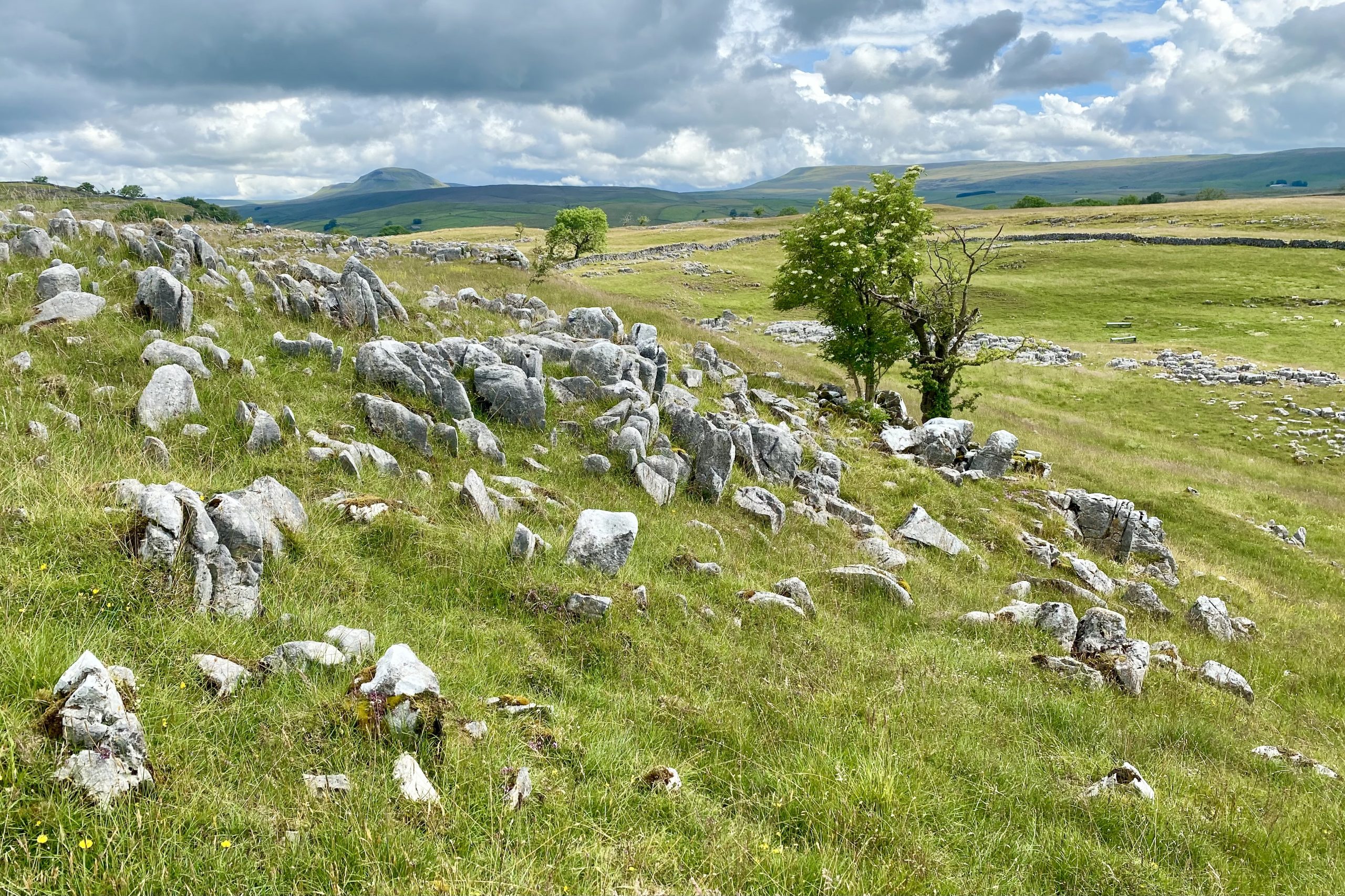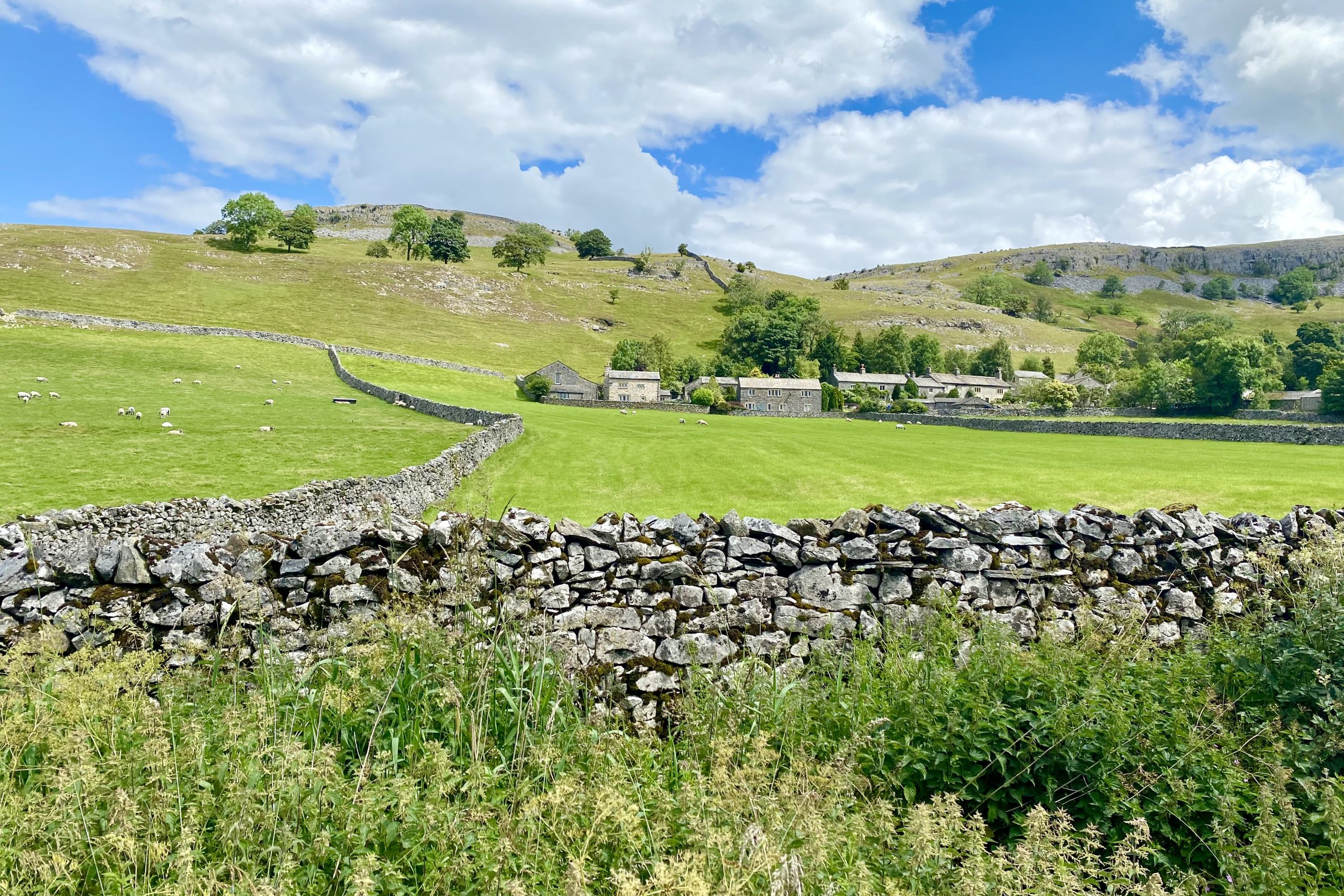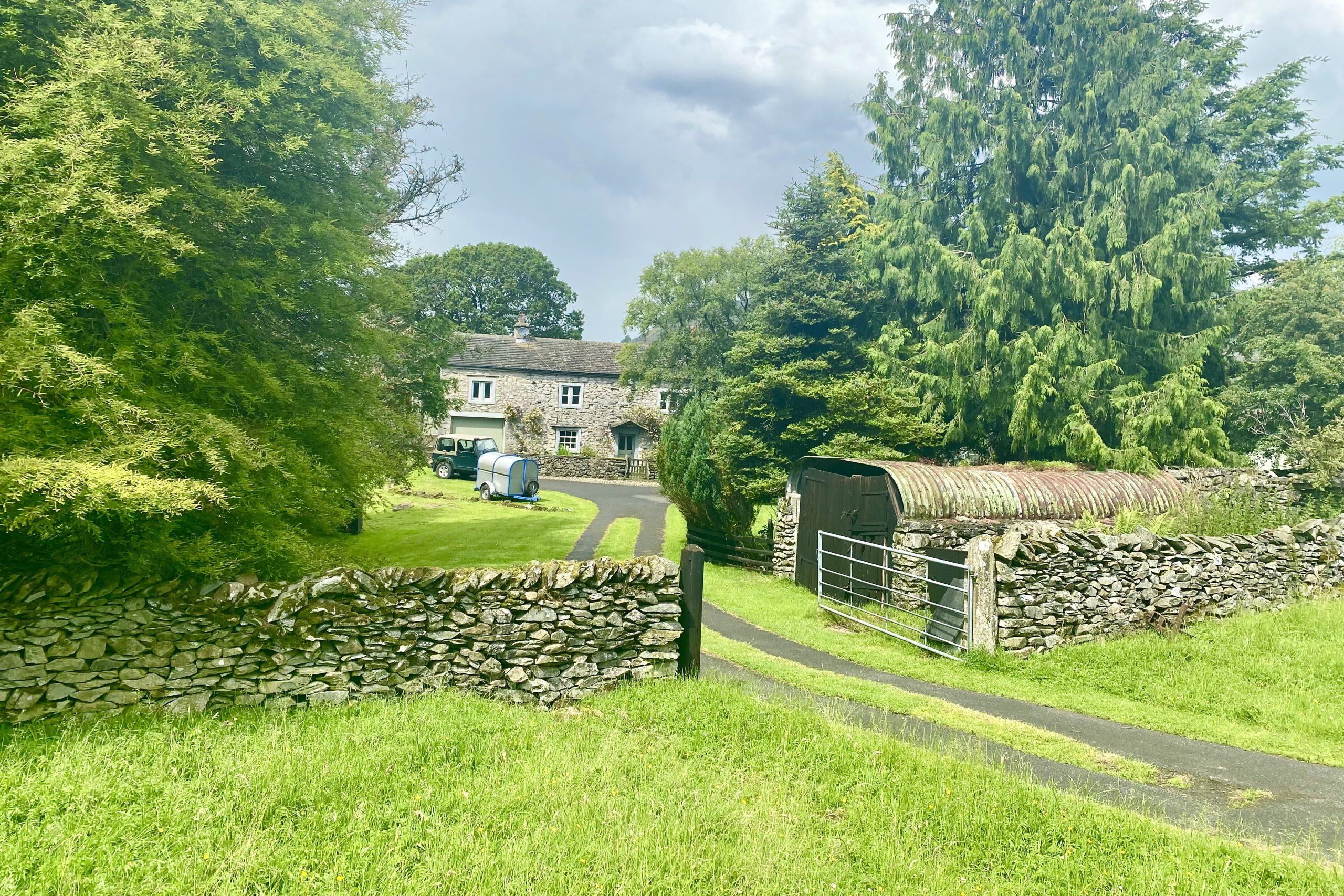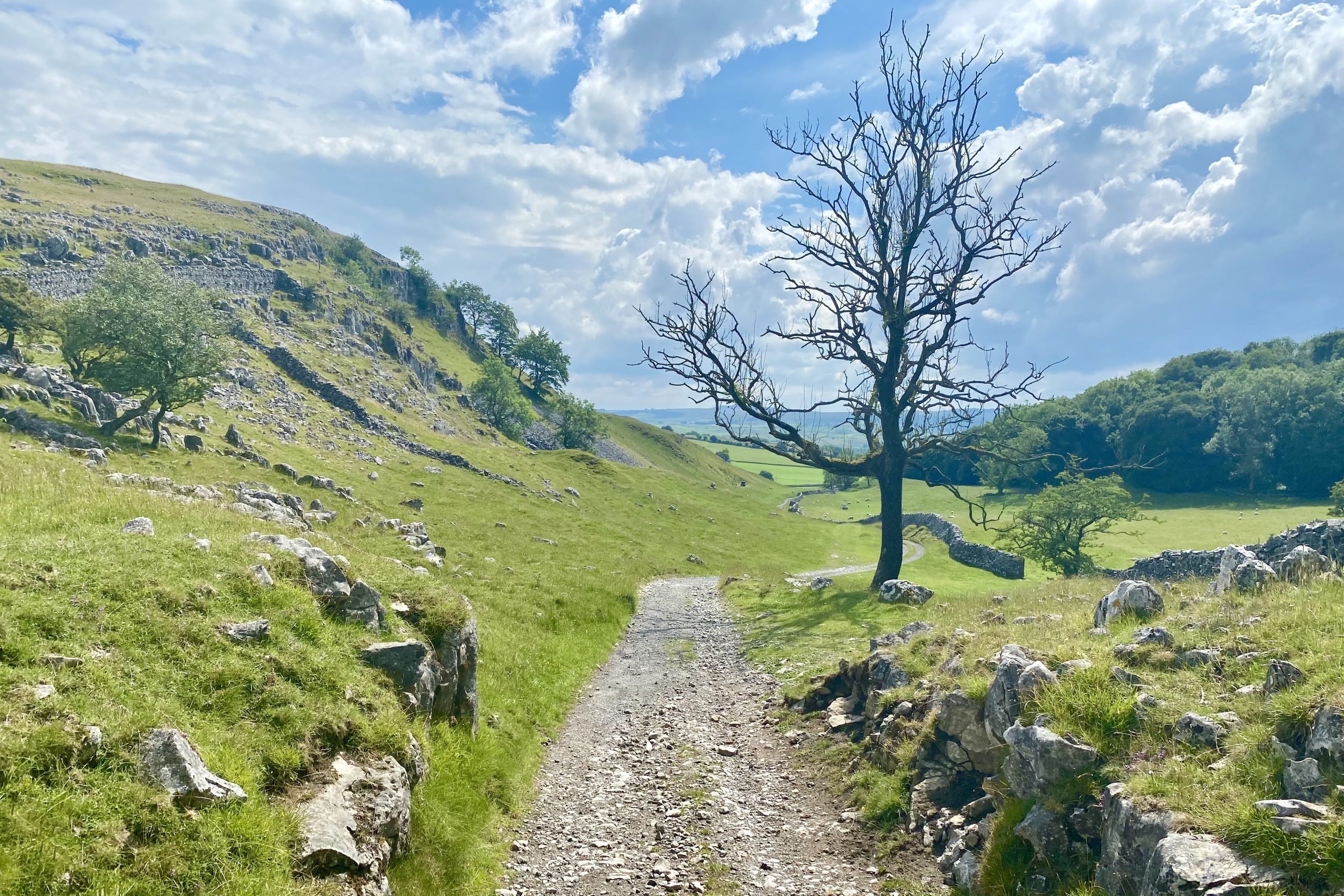West from Langcliffe to Stackhouse by way of the disused cotton mill and Langcliffe Place, then north-west on A Pennine Journey all the way to Feizor. West along the Pennine Bridleway to Austwick and, after a look around the village, east to meet the Dales High Way on the north side of Wharfe Wood. South back to Feizor then east to Little Stainforth and Stainforth Force, before returning to Langcliffe by following the course of the River Ribble. A 12-mile walk in the Yorkshire Dales.

Recommended Ordnance Survey Map
The best map to use on this walk is the Ordnance Survey map of the Yorkshire Dales Southern & Western Area, reference OS Explorer OL2, scale 1:25,000. It clearly displays footpaths, rights of way, open access land and vegetation on the ground, making it ideal for walking, running and hiking. The map can be purchased from Amazon in either a standard, paper version or a weatherproof, laminated version, as shown below.
Standard Version
Weir on the River Ribble between Langcliffe and Stackhouse.

The view north towards Pen-y-ghent shortly after leaving Stackhouse on A Pennine Journey.

The grassy route of A Pennine Journey at Feizor Thwaite between Stackhouse and Feizor. Ingleborough can be seen in the distance on the left, recognisable by its distinctive flat plateau.

The track down to Feizor.

The tiny hamlet of Feizor. The name means ‘Fech’s summer pasture’, referring to a prominent local landowner whose name was recorded at the time of the Norman conquest.

The view north as we leave Feizor on the Pennine Bridleway.

Time for a break just before we enter Austwick.

Austwick Bridge carrying Graystonber Lane over Austwick Beck.

The Game Cock Inn in Austwick.

The Grade 2 listed Flascoe Bridge over Austwick Beck.

Jop Ridding Farm near Wharfe Wood.

Looking back towards Moughton Scar (foreground) and Pen-y-ghent (background) from the Dales High Way near Wharfe Wood.

Beautiful limestone scenery just north of Feizor between In Moor and Feizor Wood.



A young lamb decides to take a stroll across the top of a dry stone wall.


Smearsett Scar as seen from the Dales High Way between Feizor and Little Stainforth.

Stainforth Bridge, a 17th-century, arched packhorse bridge over the River Ribble at Stainforth Force. Now Grade 2 listed, the bridge was built in 1675 by Samuel Watson, a local Quaker who owned Knight Stainforth Hall, a Jacobean house nearby.

Stainforth Force, a 2½ metre high waterfall on the River Ribble. It is a cascade waterfall, where water descends a series of rock steps. The location is a popular tourist attraction, particularly in autumn when salmon are migrating up the river.



Stainforth Scar between Stainforth and Langcliffe.

The Settle to Carlisle Railway
This 72-mile railway line was built by the Midland Railway Company and was completed for passenger travel in 1876. It took six years to build, by men who had to endure harsh conditions in a challenging landscape. According to Visit Cumbria (https://www.visitcumbria.com/carlset), the railway boasts the following features:
- 380 numbered bridges (including 14 tunnels & 21 viaducts).
- 20 stations (11 open, 9 closed).
- 12 signal boxes (10 operational, 2 preserved).
- Approximately 150 railway workers’ houses (all now in private ownership).
- Approximately 100 line-side huts (all disused and in various stages of decay).
- One aqueduct (recently restored).
- One original water tower (in Settle, recently restored as a home).
